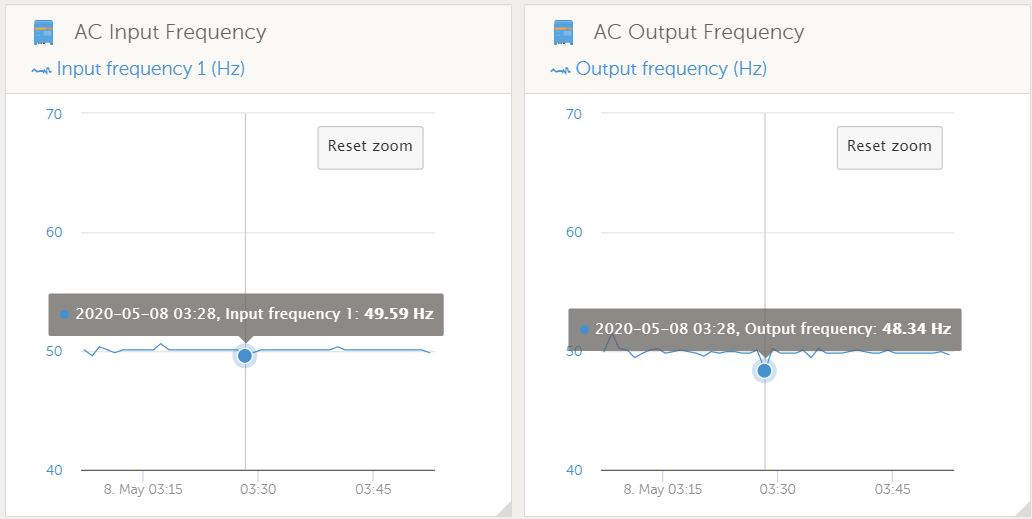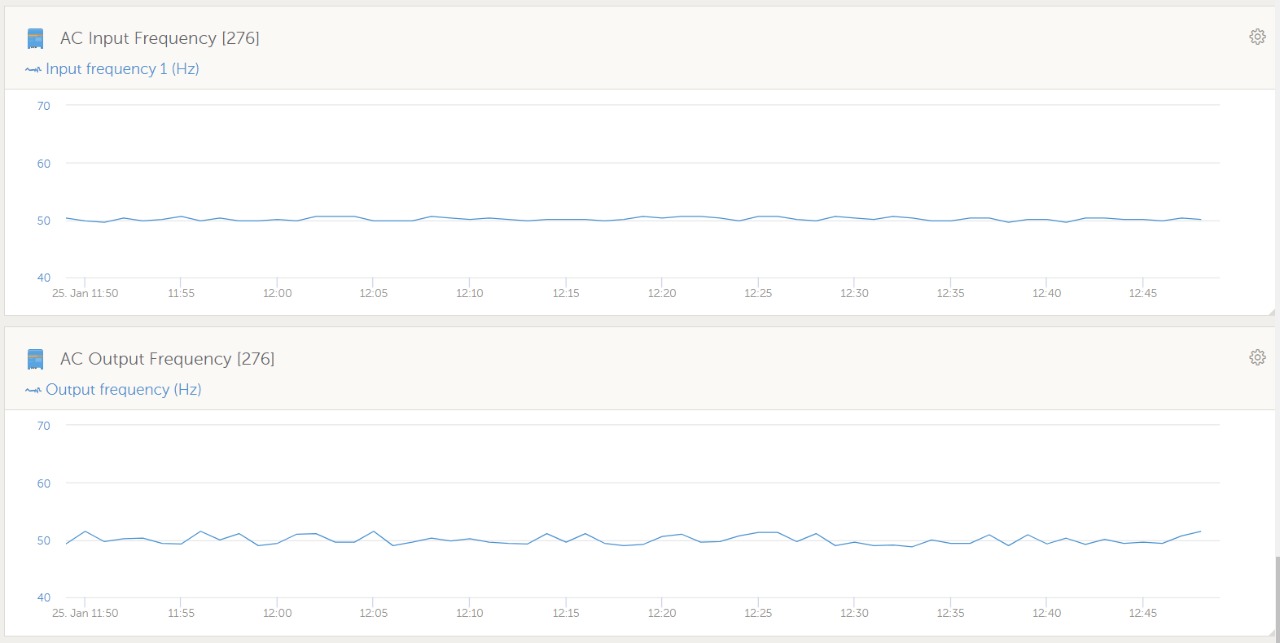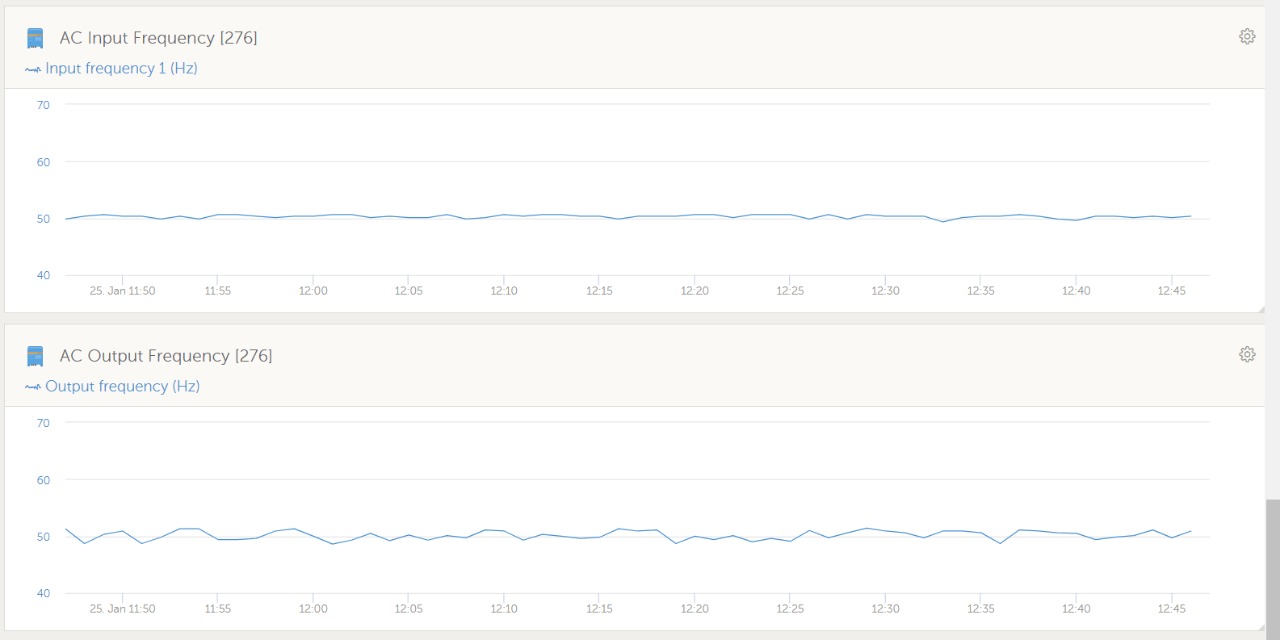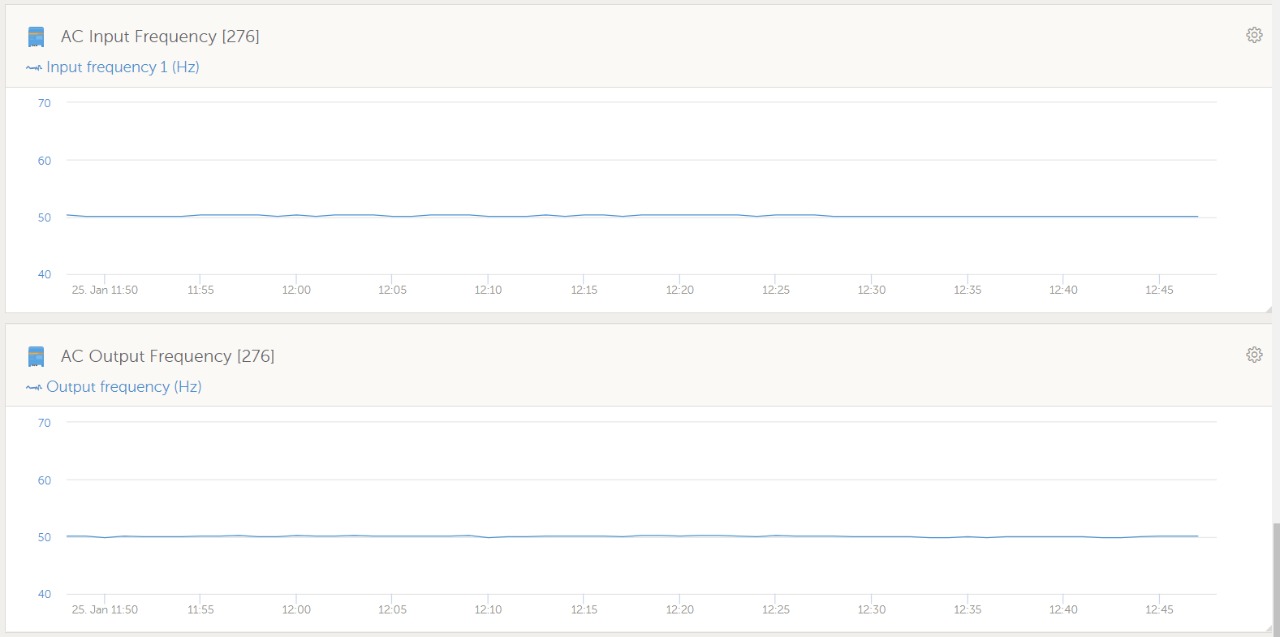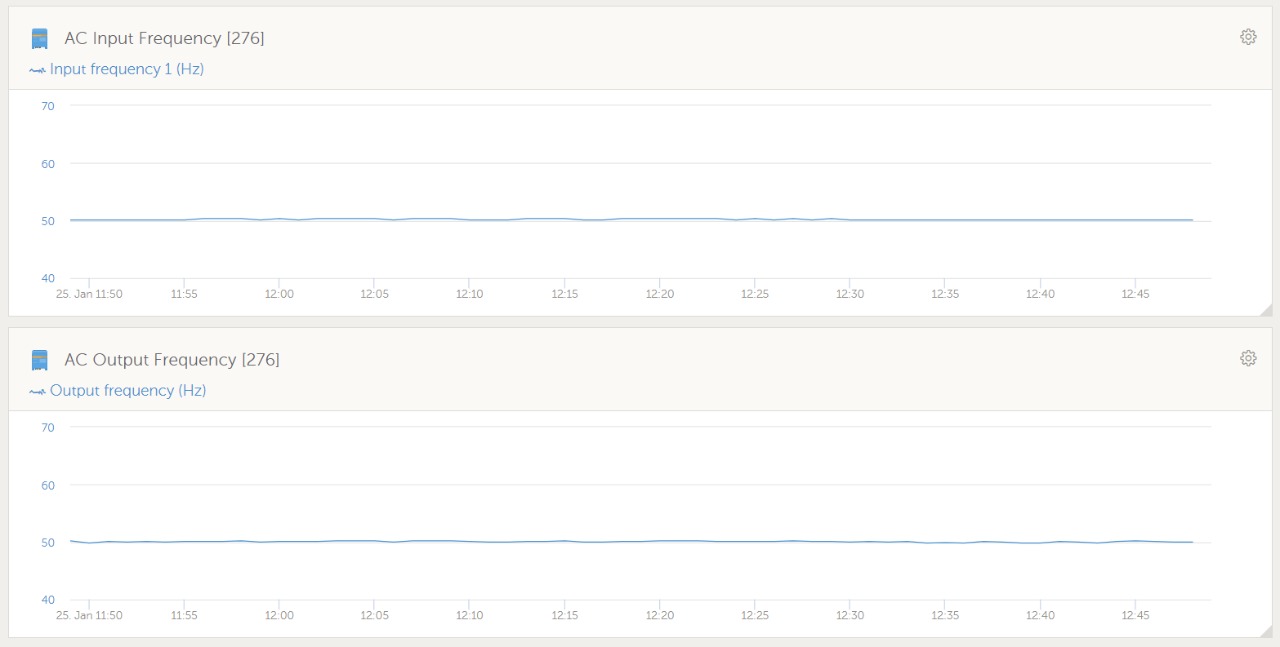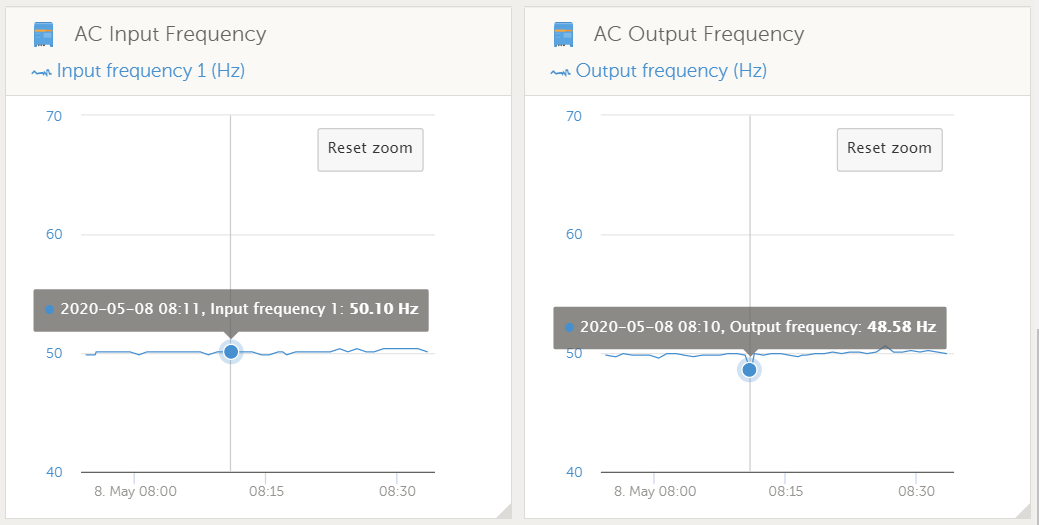I've been trying to get to the bottom of why we have some flickering LED downlights in our house, especially those on dimmer switches. Dimmer switches are notoriousely sensitive to frequency variations.
I've been looking at my Multi's AC Output metrics from the VRM and I noticed that the frequency can sometimes drop as low at 48.34 Hz.
According the Multi's specs, there should be about a 1% variation on the 50 Hz output, which I calculate should only go down to around 49.50 Hz.
Can anyone tell me if this frequency variation that I am having is unusual for a Multi, or is that normal? I am wondering if this points to some type of fault?
This issue is occurring when we are running off the grid on ESS settings.
See screenshot below:
